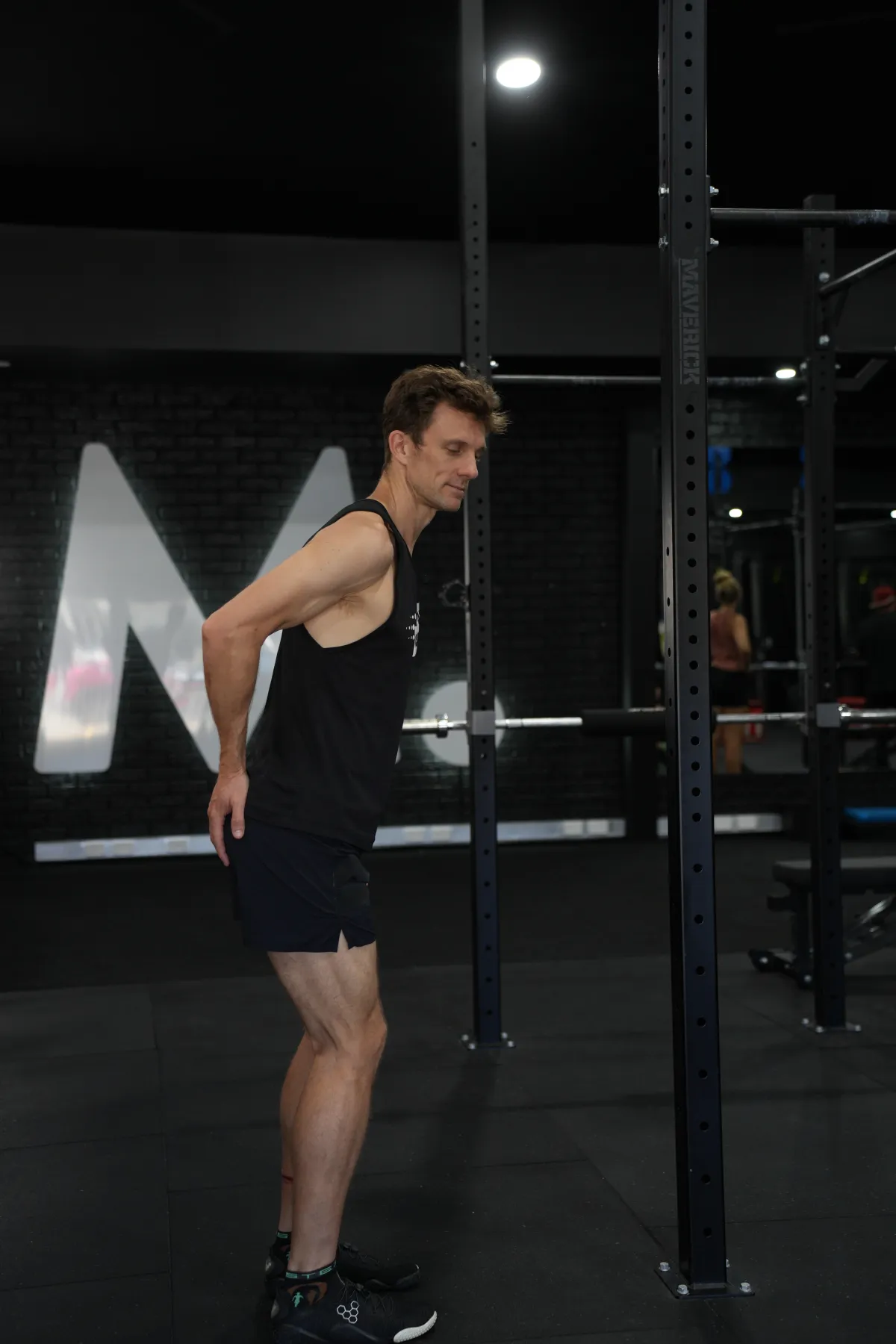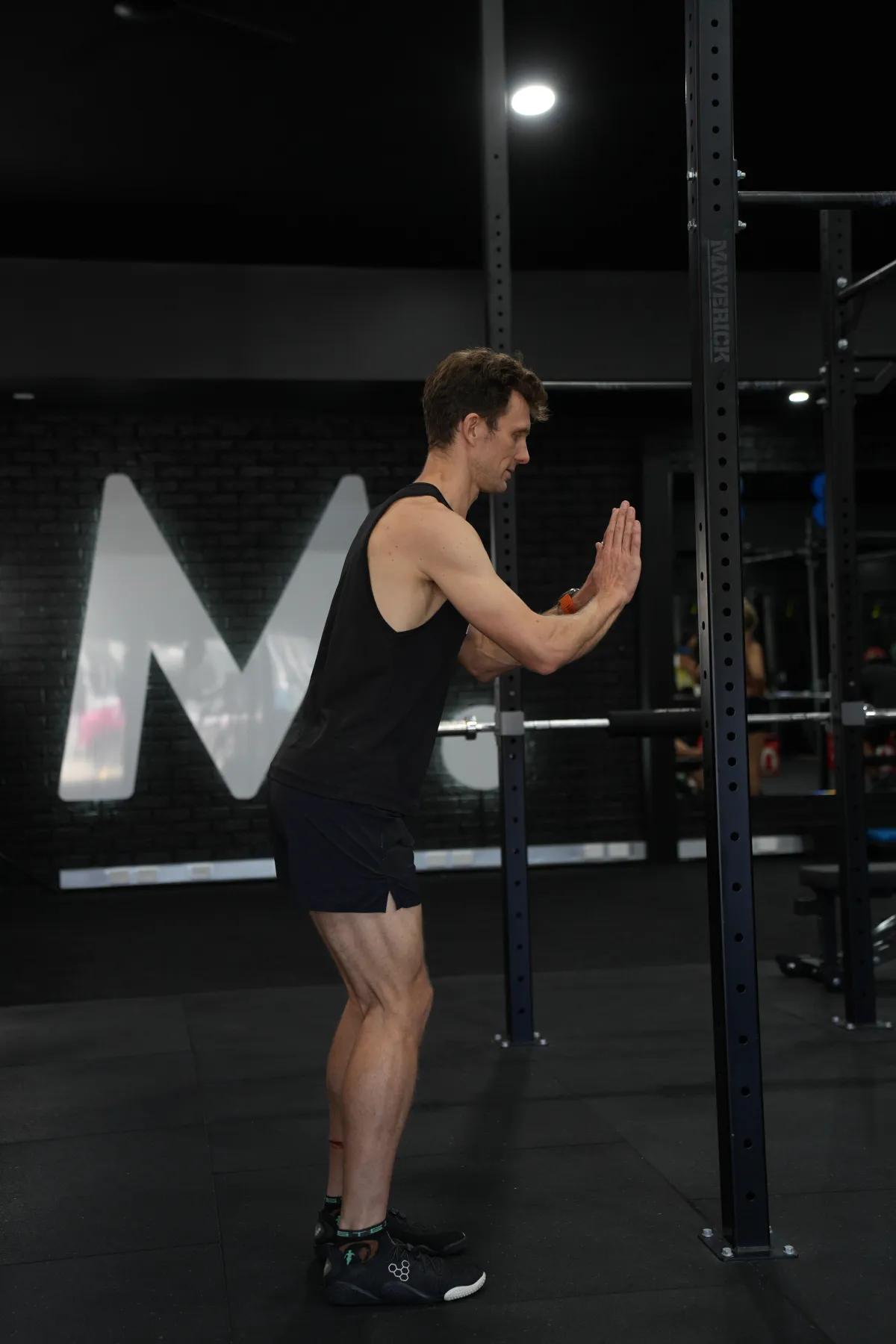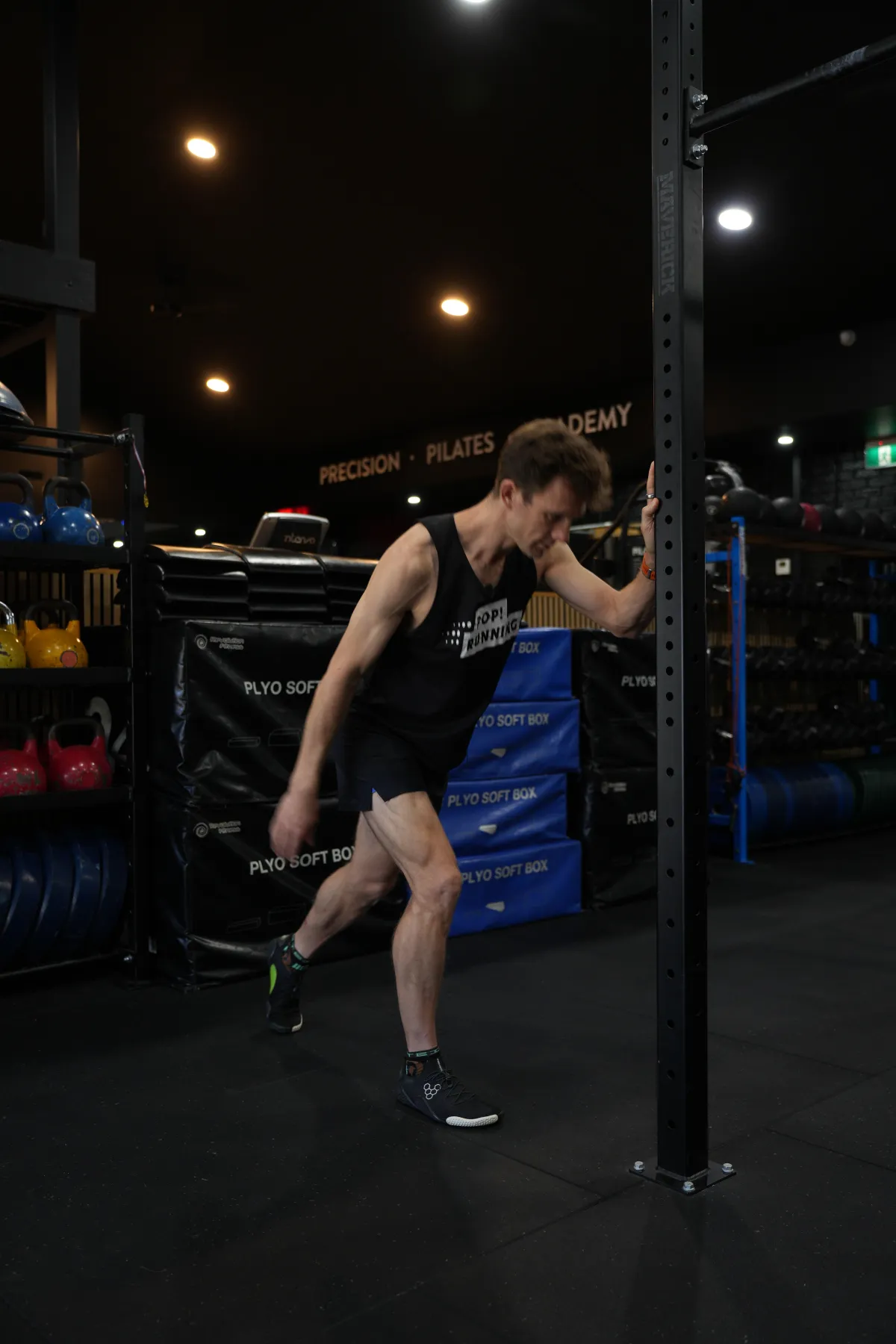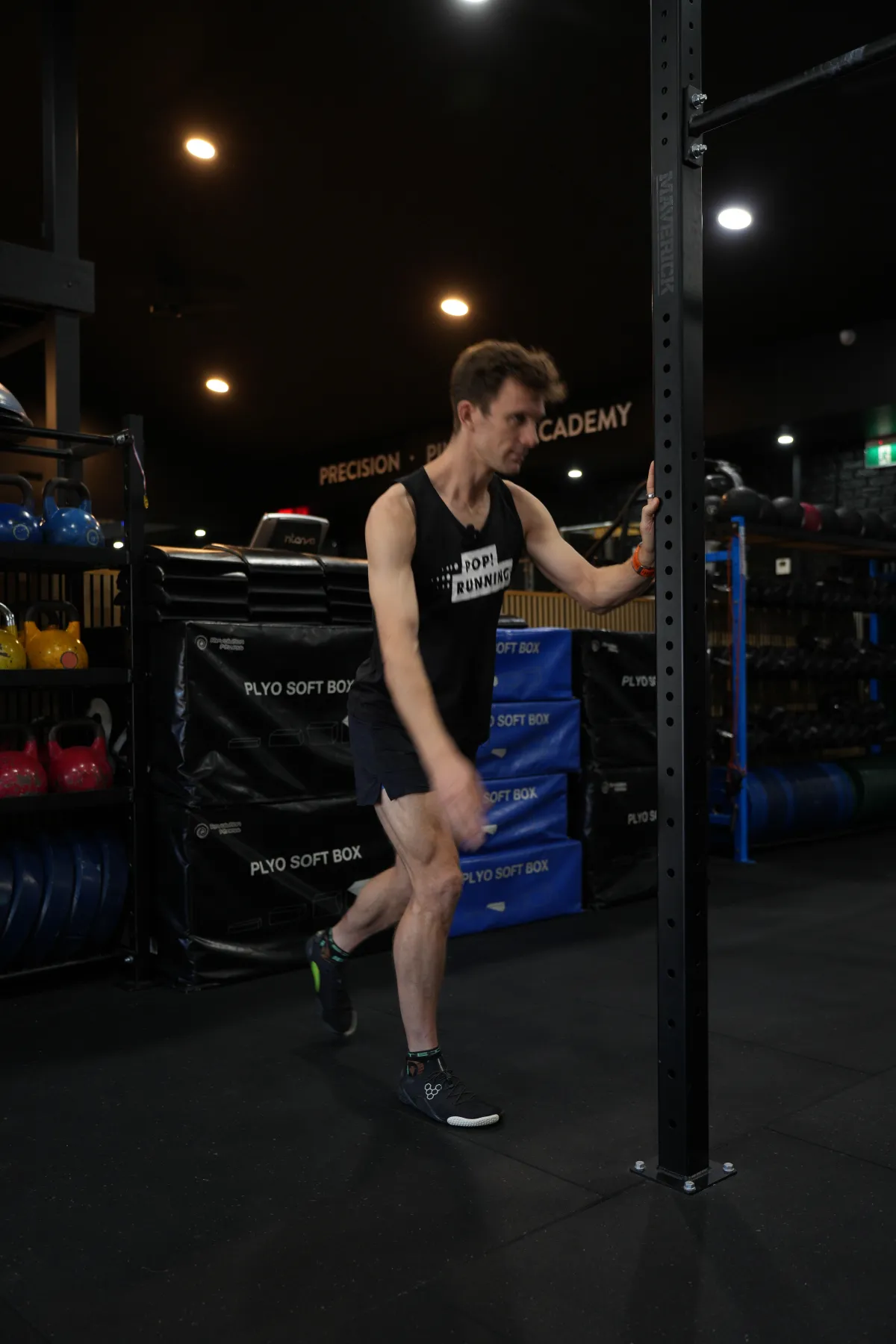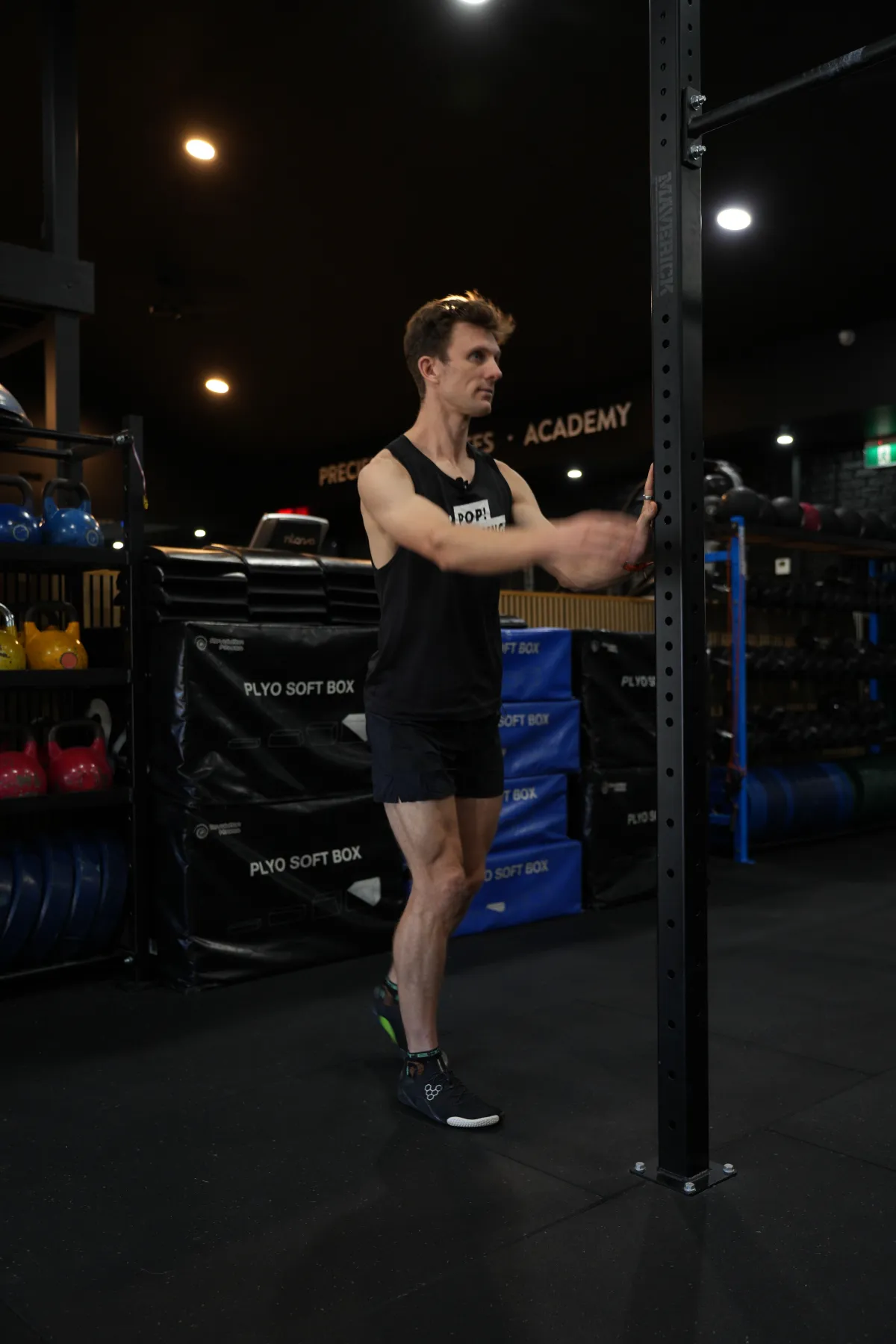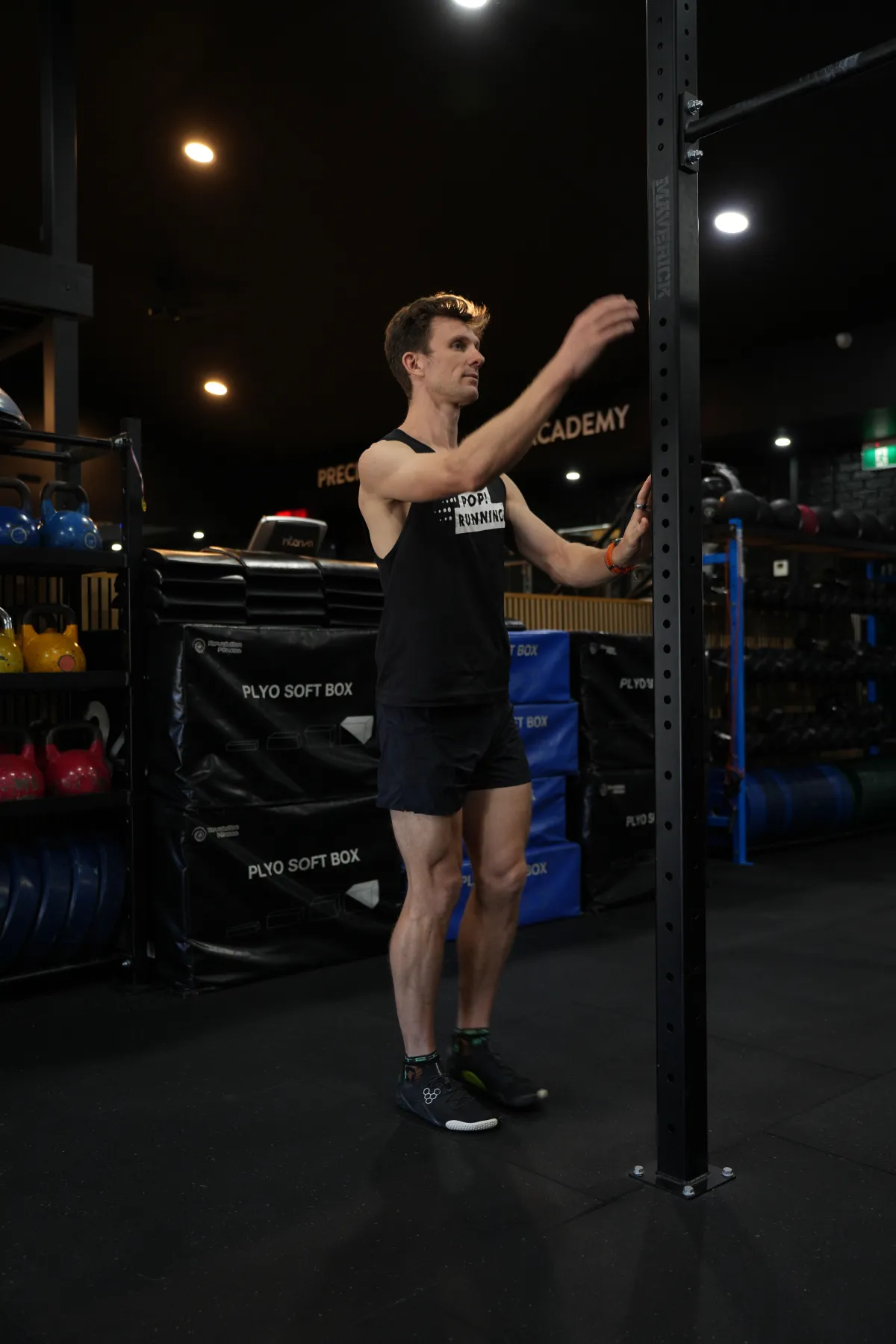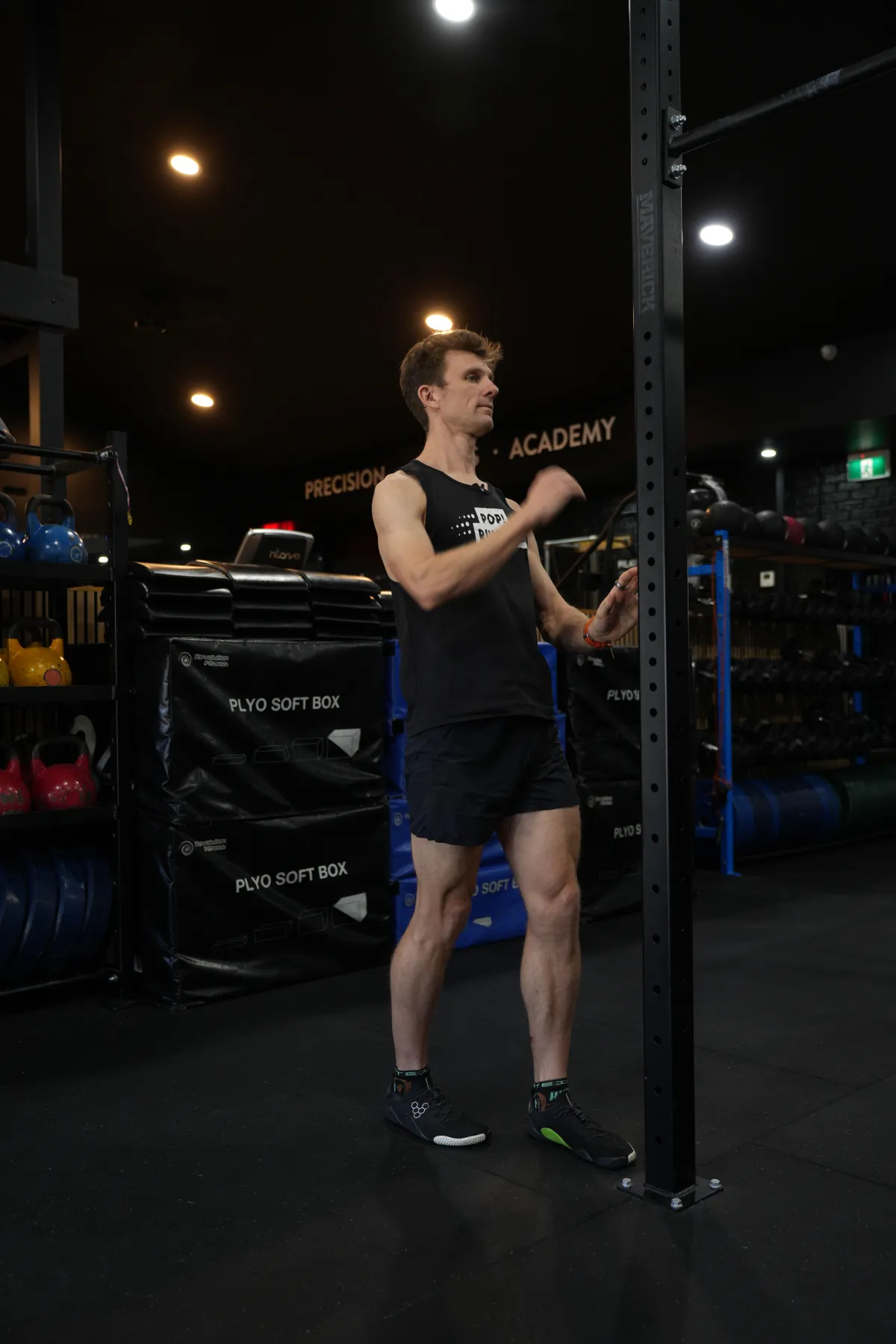
Feel the Difference – But Know That Change Takes Work
Most people don’t realize it, but the way they move is making running harder than it should be. If you’ve ever struggled with knee pain, tight calves, or feeling like running takes too much effort, chances are you’re not using your glutes correctly.
The Functional Step is a way to feel what it’s like to move the right way—using your glutes and core instead of overloading your quads, calves, and hip flexors. This is your first step towards unlocking effortless movement, but be patient: it takes time and practice to fully integrate this into your running or walking. That’s where my training programs come in.
Watch and Follow Along with this Initial Training
This training breaks down the functional step and explains how you can implement it for yourself. Watch and follow along and see for yourself how this can change everything about how you move.
Practice this for 5 minutes a day. Review the detailed breakdown below, and you can also get a PDF version here.
Once you're confident that this is changing how you move, if you want to take it to the next level and transform how you run, check out my course.
Step-By-Step Functional Step Breakdown
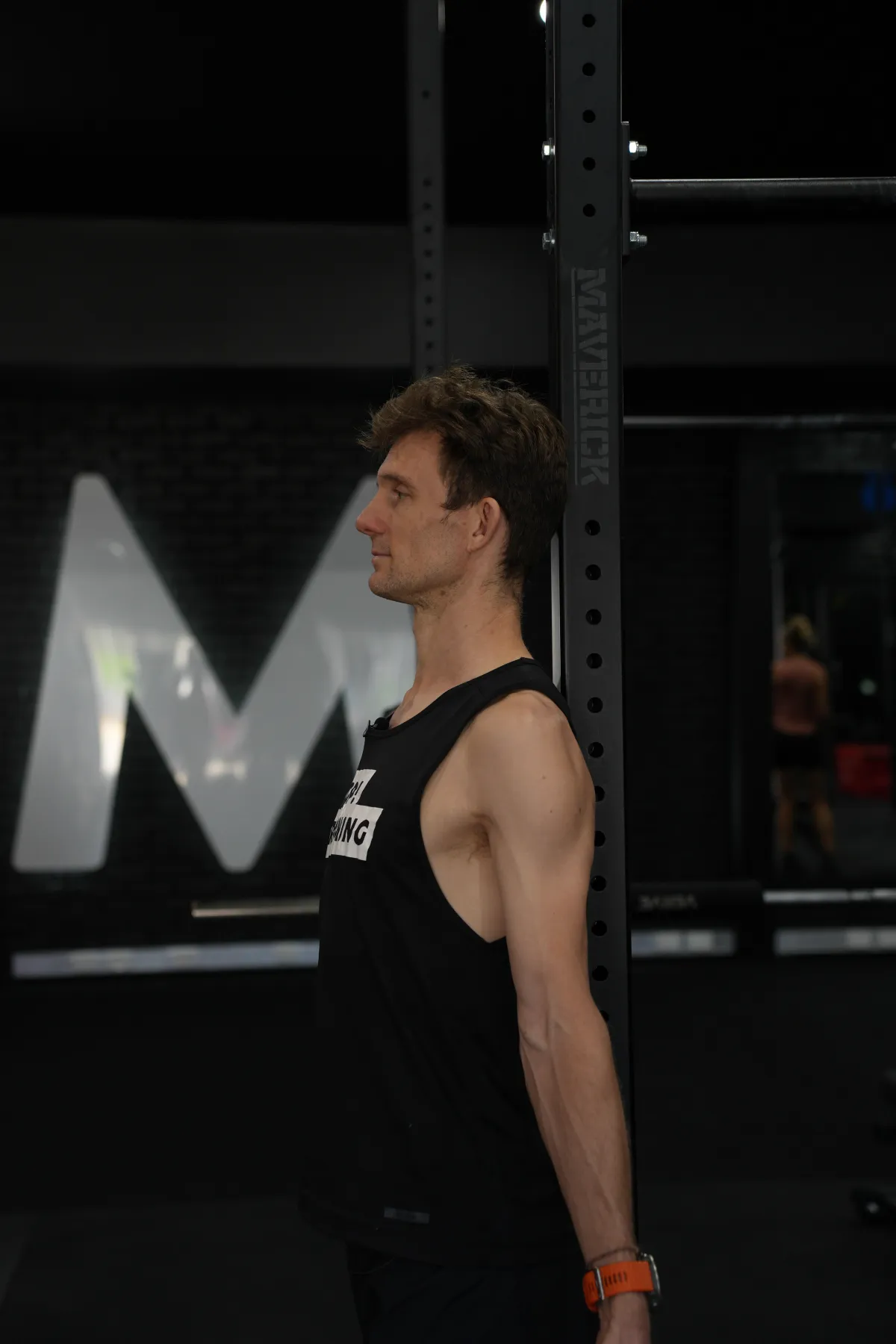
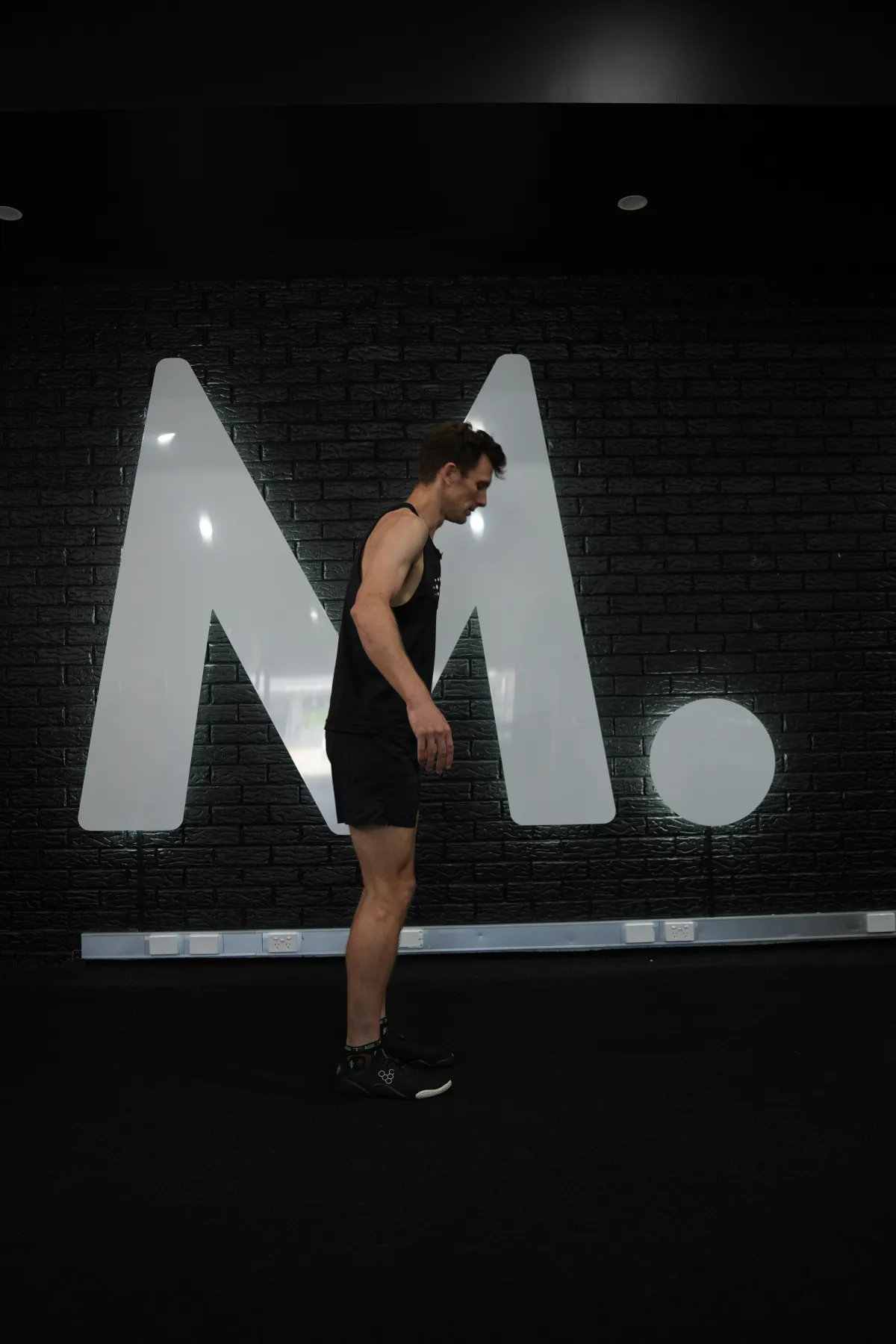
Step 1: Find Your Neutral Posture
Establish a strong, neutral posture as your foundation.
✅ Stand tall with shoulders, bum, and back of head aligned—use a wall or a chair if needed for feedback.
✅ Keep your feet hip-width apart and pointing straight ahead.
✅ Have your head stacked over your spine, eyes looking forward.
✅ Engage your core slightly, as if doing an ab crunch, then relax while maintaining that posture.
✅ Think “belt buckle up” – this helps align your pelvis correctly.
✅ Keep your shoulders relaxed but set back to avoid slouching.
Goal: Feel balanced, upright, and ready to move efficiently.
Step 2: The Hinge
Prepare your body to use glute-driven propulsion instead of over-relying on your hip flexors, quads or calves.
✅ From your strong posture, push your hips back slightly.
✅ Keep your back straight by pulling your shoulders open and back—avoid rounding or arching your lower back by lifting your belt buckle / pelvis up.
✅ Your knees will bend slightly, but the movement should come from your hips, knees don't go forward.
✅ Maintain a strong, active core throughout the movement.
Goal: Feel the engagement in your glutes, not your quads, hamstrings, lower back or calves.
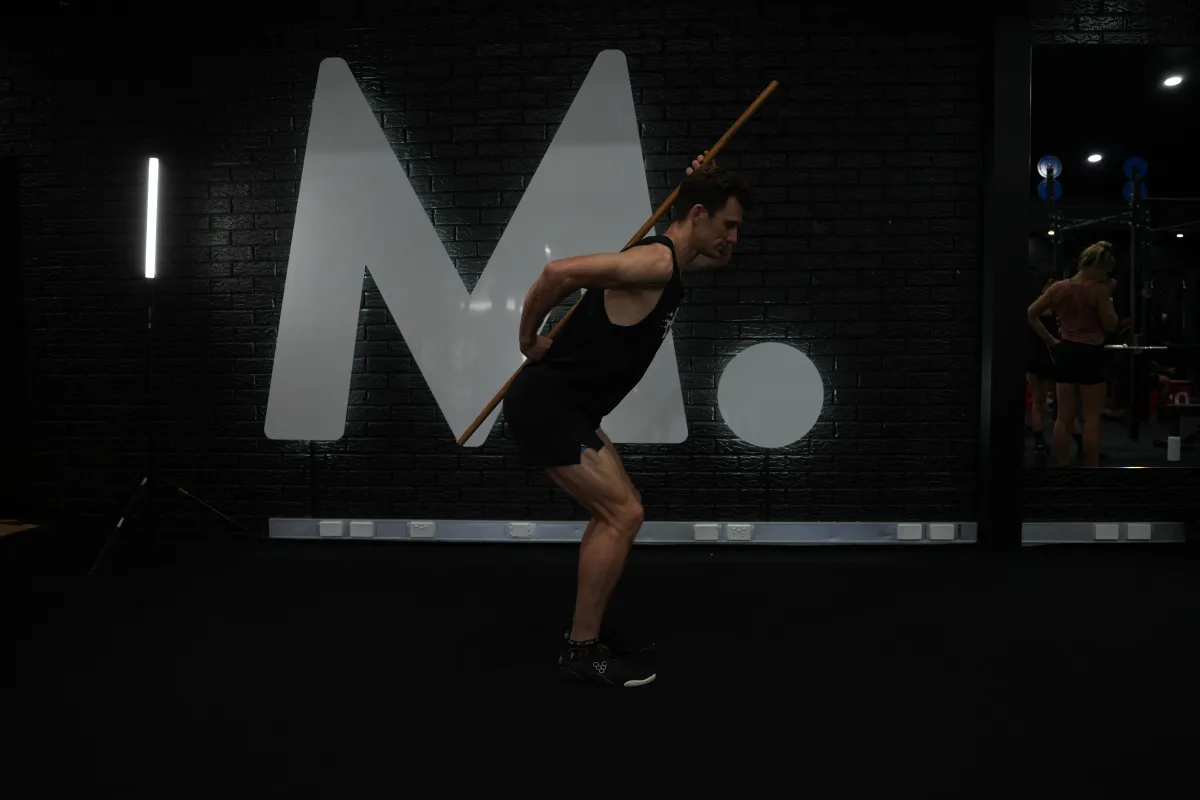
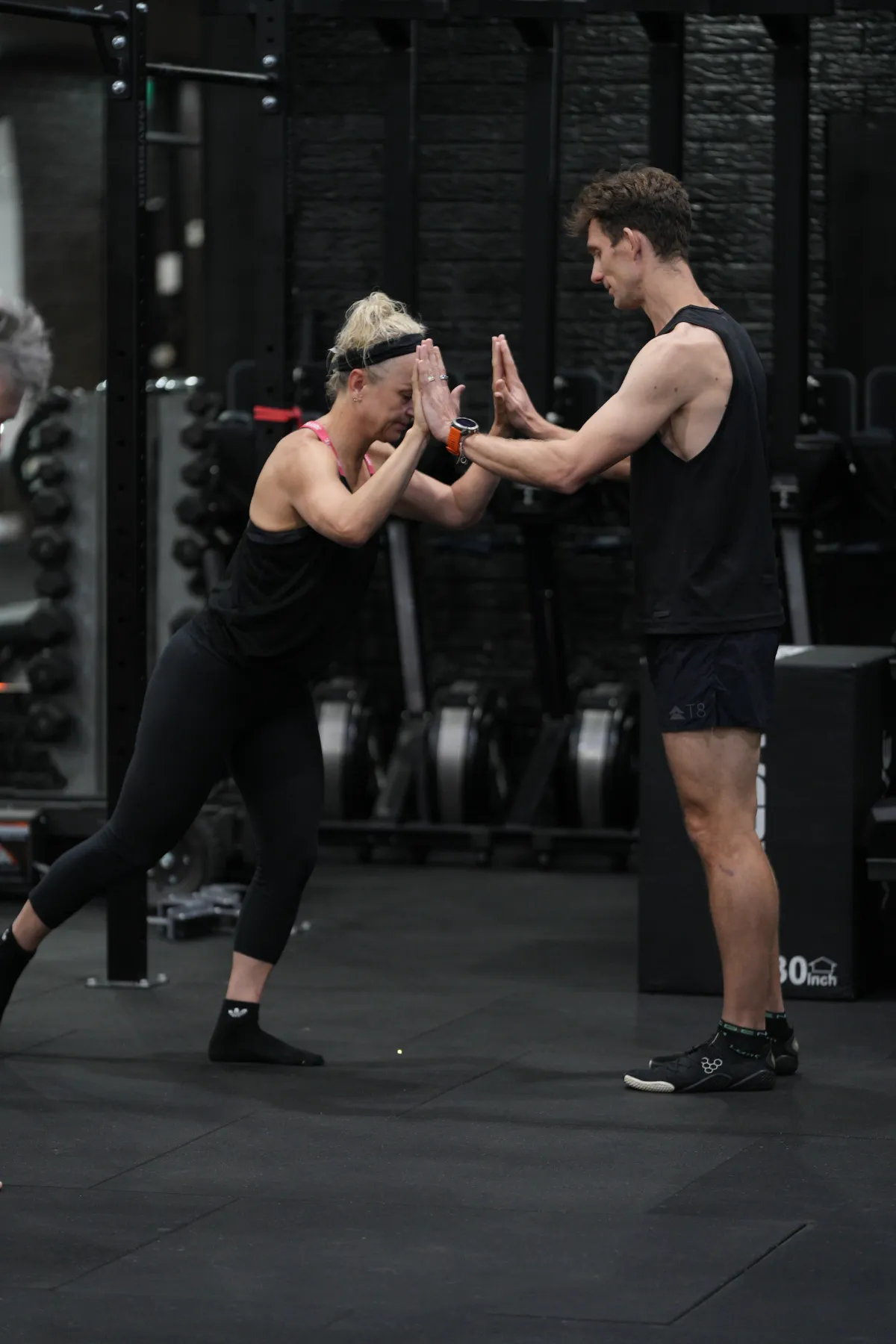
🔹 Key Tip: If you feel tension in your quads or hip flexors, slightly tilt your belt buckle up to keep your core engaged and avoid overusing the front of your body.
Step 3: Lean
Introduce forward motion by leaning from your center of mass.
✅ From the hinge, gently lean forward from the ankles, not the waist.
✅ Keep your core engaged so that your entire body leans as one unit.
✅ Use a wall or pole to practice controlled leaning from the ankles without bending over at the waist.
✅ The key is to let gravity assist you.
Goal: Feel how leaning forward naturally assists forward movement with minimal extra effort.
Step 4: Step Back
Set up for controlled propulsion by shifting weight dynamically.
✅ While maintaining your lean, step one leg back.
✅ Your front leg should bend as you hinge forward, loading the glute and ready to drive your torso up and forward.
✅ Keep the front leg glute engaged—this is where your power will come from.
Goal: Create tension in the front leg glute, preparing for the drive phase.

Step 5: Drive Through
Transition into forward motion using stored energy and elasticity.
✅ Imagine the back leg as a dead weight, completely relax it, especially the hip flexors.
✅ From the step-back position, drive up through the front leg, as you would in a kettlebell swing or a single leg squat.
✅ Allow your trailing leg to swing forward naturally, rather than lifting or pulling it.
✅ Focus on keeping the movement smooth and free flowing, avoiding stiffness or resistance.
✅ Stand up tall with the slight forward lean which will move you forward into your first Functional Step.
Goal: Feel effortless forward motion, using a powerful drive from the glutes, instead of using your leg muscles.
Step 6: Integrate Into Movement
🔹 Repeat this sequence slowly and mindfully for a few steps, focusing on generating power only from your glutes.
🔹 As you become more comfortable, increase rhythm and fluidity, allowing momentum and gravity to assist your movement.
🔹 Once the motion feels natural, you’ve successfully learned how to walk using your glutes—the foundation for efficient running.
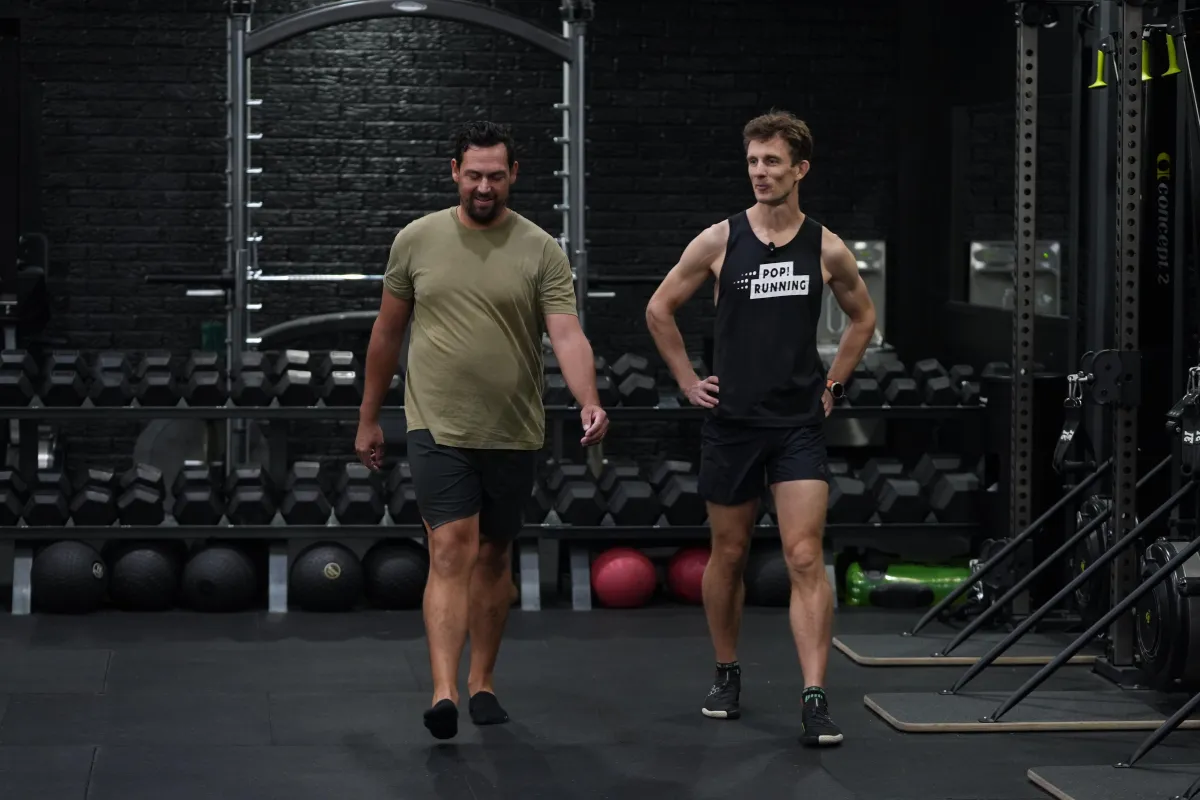

What This Does for You
✅ Prevents knee, calf, and lower back strain
by using the glutes and core as your primary power source.
✅ Aligns your movement
with natural human mechanics, reducing unnecessary energy use.
✅ Creates effortless power
using the glutes, like in a deadlift, forward movement with power becomes possible.
✅ Transforms how you walk and run,
making movement effortless and pain-free.
🚀 Master this, and you’re already on your way to walking and running with ease, efficiency, and power!
See It In Action
See the change that Sam made on his Dad, aged 71 and an avid hiker with chronic calf issues, in less than two weeks, by teaching him this technique.
Sam's Dad on 2nd March
Before being taught The Functional Step
Sam's Dad on 15th March
After learning The Functional Step
ChatGPT Analysis of the above videos:

What’s Next?
Try It on Your Next Walk or Run!
Now that you’ve experienced The Functional Step, take it outside and try it in real movement. Pay attention to how different it feels. Less strain? More ease? That’s the power of moving correctly.
If this clicks for you, the next step is learning how to lock this movement in so it becomes second nature.

👉 Want to transform your running?
Check out the 7-Day Functional Gait Kickstart Course and learn how to integrate this technique into your entire running stride.
See you inside,
Sam

